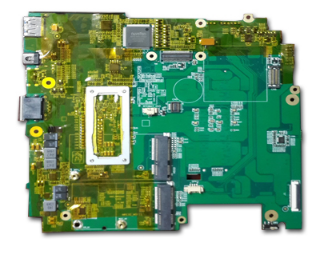With the development of electronic technology, the integration of active electronic components has greatly increased after semiconductors have moved from micron process to nano-fabrication, and the demand for passive components with active components has increased significantly. Market development of electronic PCB products The trend is lighter, thinner, shorter and smaller. Therefore, the improvement of semiconductor process capabilities has greatly increased the number of active components in the same volume. In addition to the substantial increase in the number of supporting passive components, more space is also required to place these passive components, so it will inevitably increase The size of the overall packaged device is very different from the development trend of the market. From the perspective of cost, the total cost is directly proportional to the number of passive components. Therefore, under the premise of using a large number of passive components, how to reduce the cost of passive components Cost and space, and even improving the performance of passive components, are currently one of the most important issues.

IPD (Integrated Passive Devices integrated passive components) technology can integrate a variety of electronic functions, such as sensors, radio frequency transceivers, MEMS, power amplifiers, power management units and digital processors, etc., to provide compact integrated passive devices IPD products have the advantages of miniaturization and improved system performance. Therefore, whether it is to reduce the size and weight of the entire product, or to increase the function in the existing product volume, integrated passive component technology can play a great role.
In the past few years, IPD technology has become an important way to achieve system-in-package (SiP). IPD technology will pave the way for integrated multi-functionality "beyond Moore's Law"; at the same time, PCB processing can introduce IPD Technology, through the integrated advantages of IPD technology, can bridge the widening gap between packaging technology and PCB technology.
IPD integrated passive component technology, from the initial commercial technology has been developed to replace discrete passive components, and is growing steadily, driven by industries such as ESD/EMI, RF, high-brightness LEDs, and digital hybrid circuits.
Yole's research report on thin film integrated passive and active devices predicts that by 2013, the total market share will exceed 1 billion U.S. dollars. IPD technology will be widely used in aerospace, military, medical, industrial control and communications and other electronic industries.
Introduction to Thin Film IPD Technology
IPD technology can be divided into thick film process and thin film process according to process technology. Among them, the thick film process technology includes low temperature co-fired ceramics (LTCC) technology using ceramics as the substrate and PCB based on HDI high-density interconnection. Printed circuit board embedded passive components (Embedded Passives) technology; and thin-film IPD technology, using commonly used semiconductor technology to make circuits and capacitors, resistors and inductors.
LTCC technology uses ceramic materials as the substrate to embed passive components such as capacitors and resistors in the ceramic substrate. The integrated ceramic components are formed by sintering, which can greatly reduce the space of the components. However, as the number of layers increases, the manufacturing difficulty and cost become more difficult. High, so LTCC components are mostly for circuits with a specific function; PCB technology of HDI embedded components is usually used in digital systems, in which systems are only suitable for distributed soldering capacitors and low- and medium-precision resistors. As the volume of components shrinks, SMT equipment is not easy to handle small components. Although the embedded printed circuit board technology is the most mature, the product characteristics are poor and the tolerances cannot be accurately grasped because the components are buried in the multilayer board. It is difficult to replace or repair and adjust after problems occur. Compared with LTCC technology and PCB embedded component technology, the thin film IPD technology of integrated circuits has the advantages of high precision, high repeatability, small size, high reliability and low cost. In the future It is bound to become the mainstream of IPD.